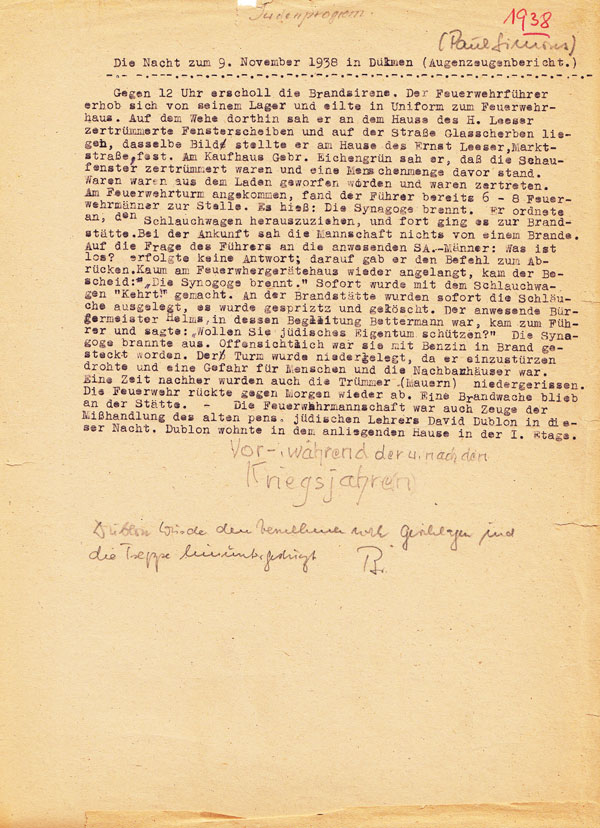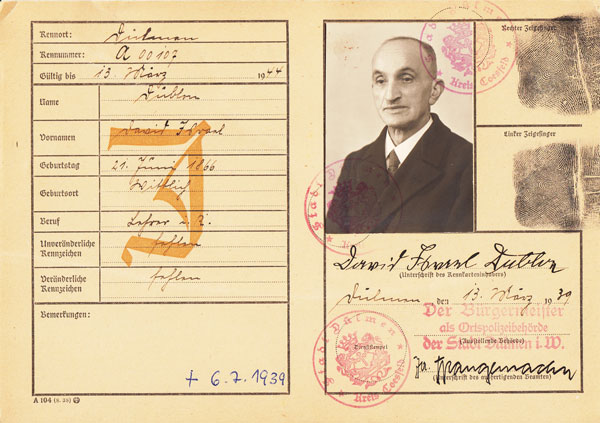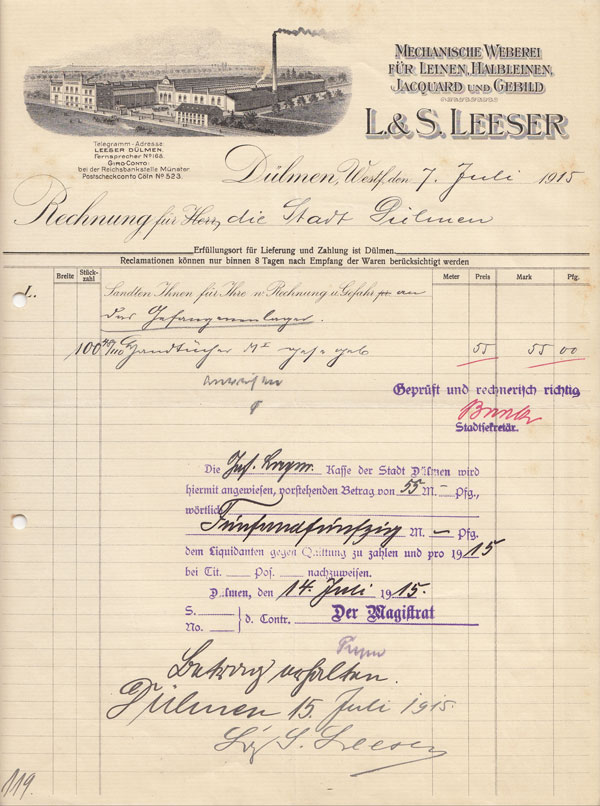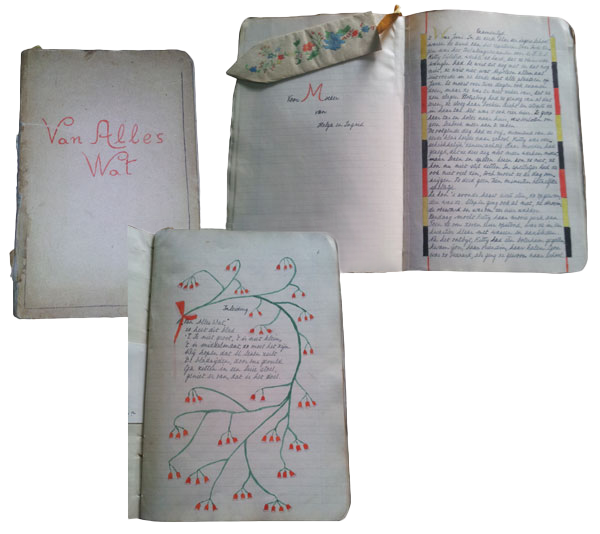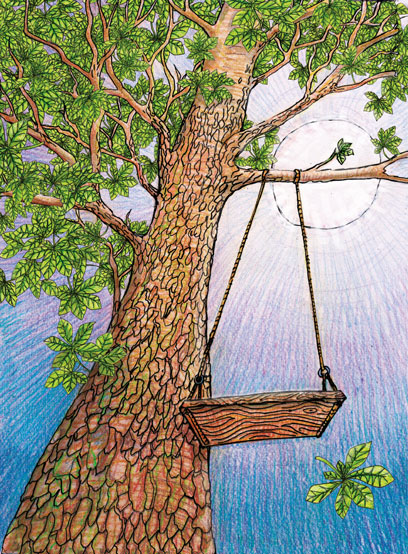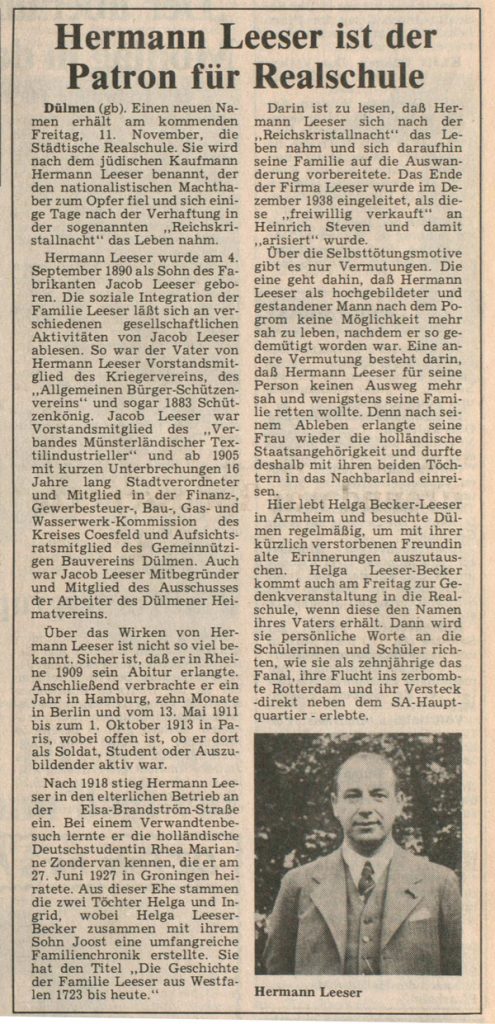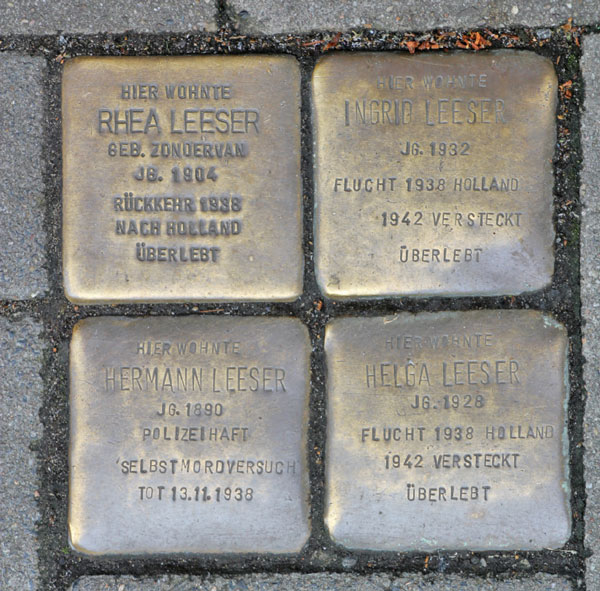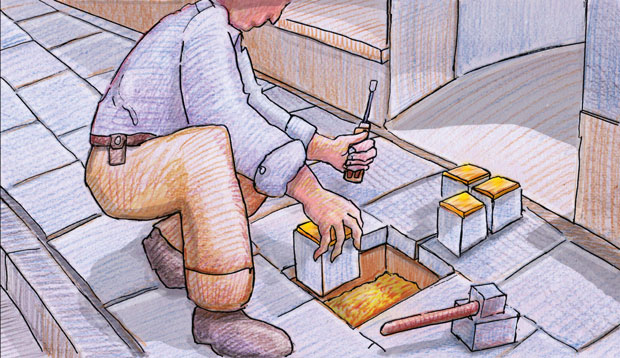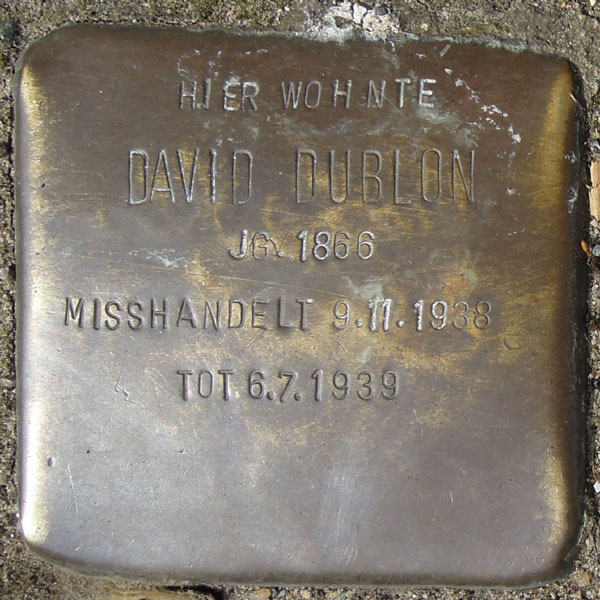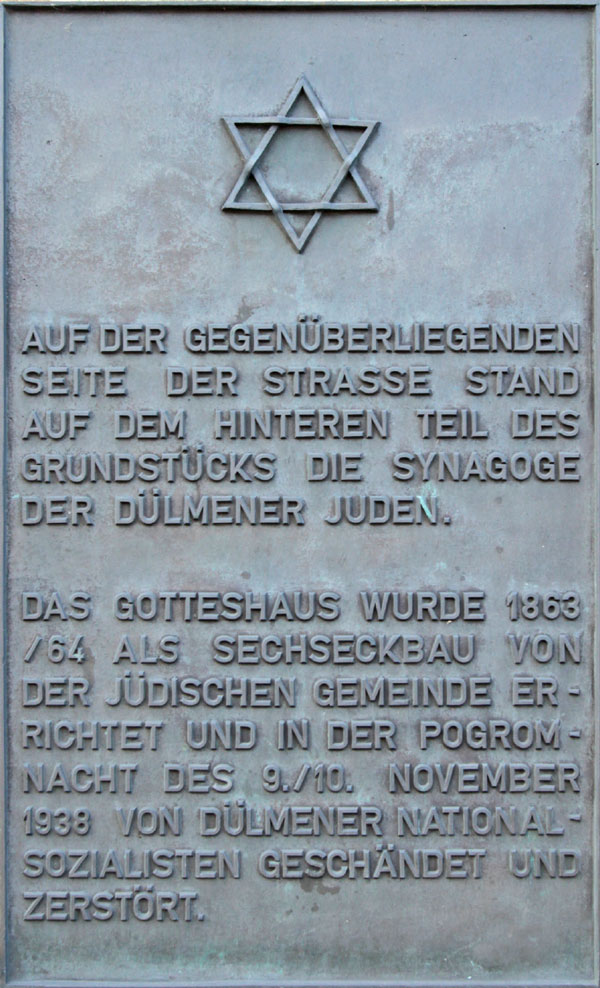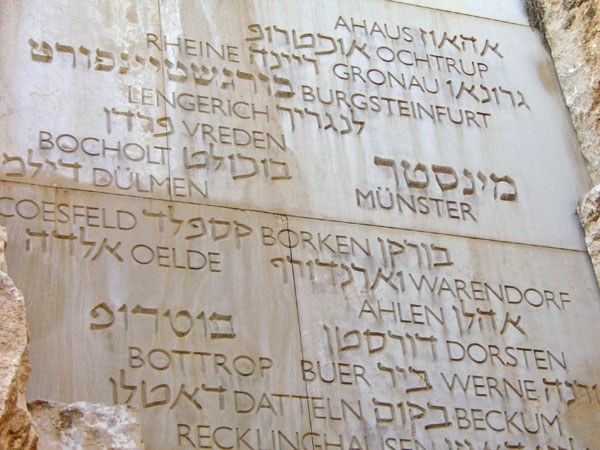Hermann Leeser School in Dülmen
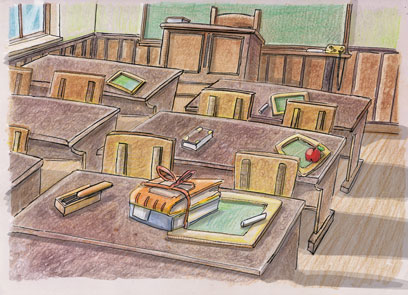
The Dülmen
door project
Introduction, explanations, and commentary on the image motifs
“Searching for traces: Jewish life in Münsterland. Mobile exhibition with doors created by citizen scientists” is a project led by the University of Münster’s Innovation Office. The Dülmen contribution involved pupils from the school history society alongside their two teachers Gerda Küper and Dr. Andrea Peine (both Yad Vashem graduates), as well as Dülmen’s municipal archivist Dr. Stefan Sudmann, the graphic designer Christiane Daldrup, the artist Udo Schotten, and Theo Schwedmann, former project leader of “Education after Auschwitz, North Rhine-Westphalia”. The team was supported within the confines of the corona pandemic both practically and in terms of content by the school secretary Mechthild Remme, the second deputy head Petra Baune, and Frieder Martike, also a teacher at the Hermann Leeser School. The white front of “our” door, which we deliberately left “old”, features concise and informative motifs from the book “Von allem etwas … – Erinnerungen von Helga Becker Leeser”. The motifs represent Jewish life in Dülmen before and during the Nazi period.
the doors closed forever to the parental home, to the synagogue, to school, to the business premises, to the shops in the town, to the houses of friends – in short, to home, but also to the flat in Rotterdam where they hid …
Anliegen ist es – wie auch im Buch – das pädagogische Prinzip Yad Vashems umzusetzen, die Namen der jüdischen Opfer aufzuspüren und ihnen individuell ihre Geschichte zurückzugeben, diese in Bild, Text, Ton und Film zu sammeln und zu dokumentieren, exemplarisch zu erzählen und darzustellen; hier an der Geschichte von Helga Becker-Leeser aus Dülmen. Damit mögen sich dem Besucher Türen öffnen für das Verstehen und wider das Vergessen …
As in the book, the aim is to put into practice the educational principle of Yad Vashem, to discover the names of Jewish victims, and to give them back their individual stories – by collecting and documenting these stories in pictures, text, sound and film, and telling and presenting the stories as examples. We do so here with the story of Helga Becker-Leeser from Dülmen, which is intended to open doors for the visitor so that she can gain in understanding and not forget …
Doors closed for members of the Jewish community in Dülmen, and thus for Helga Becker-Leeser, too: the doors closed forever to the parental home, to the synagogue, to school, to the business premises, to the shops in the town, to the houses of friends – in short, to home, but also to the flat in Rotterdam where they hid …
The back of the door, painted the same green that the book uses (green as a reminder of the chestnut tree in the garden of the Leeser house, as well as a symbol of hope), features motifs from the present as a counterpart, as it were, to the white front of the door and its memory of the past. The here and now is marked by a lively dialogue, since the work of memory at school, and especially the book project “Von allem etwas …”, have opened many doors for pupils at the Hermann Leeser School and for all those involved in the book project: the doors of friendship and solidarity with Helga, her son Joost, and her sister Ingrid in the Netherlands, the door to partnership and cooperation with the International School for Holocaust Studies in Yad Vashem, Israel, the doors to the latter’s partner schools, and to Ha-Maayan High School in Rishon Lezion, Israel. The door also opened to Villa ten Hompel in Münster, as did the doors of cooperation to institutions such as Bildungspartner NRW, the local history society in Dülmen, and most recently to the University of Münster’s Innovation Office – and thus, in all, to the hearts of many people involved in the work of memory. We all focus on the past, and especially now at a time of resurgent anti-Semitism and increasing xenophobia in Germany – our aim being to close this door once and for all.
the work of memory...has opened many doors for pupils at the Hermann Leeser School
...the story of Helga Becker-Leeser from Dülmen... is intended to open doors for the visitor so that she can gain in understanding and not forget ...
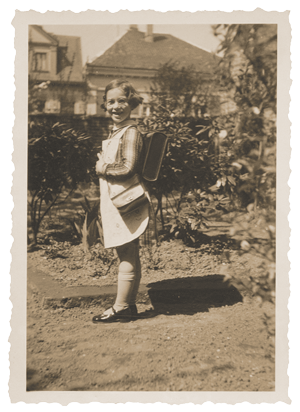
The past
Soon in the hands of the NSDAP
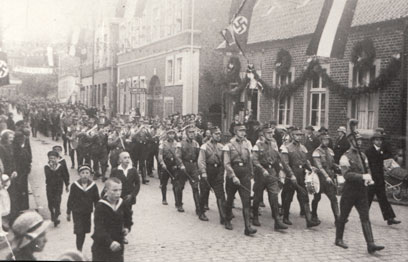
Dülmen was one of the few towns in the Münsterland region where there was already a local NSDAP group before 1933, having been founded in 1927 by the brothers Franz and Julius Bielefeld.
The Leeser house is the light-coloured house in the middle, without (!) a swastika; on the left is the churchyard wall of St. Viktor.
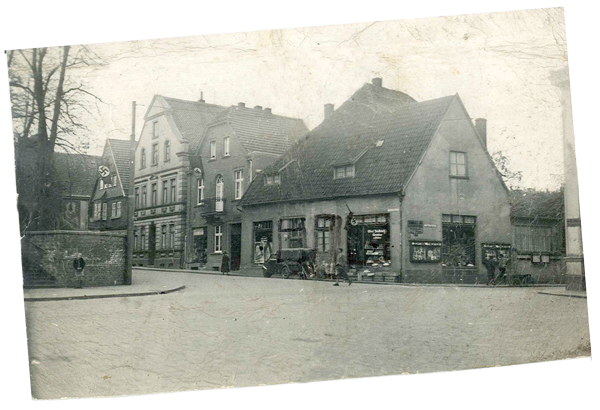
The Leeser house, Lüdinghauser Straße in Dülmen
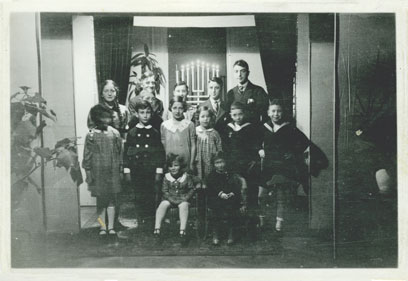
The people of Dülmen knew of a photo of the synagogue’s interior. While working on the book, the team got hold of this photo by chance from the Leo Baeck Institute in New York; it shows 14 children inside the synagogue; Helga is in the second row, the third child from the right.
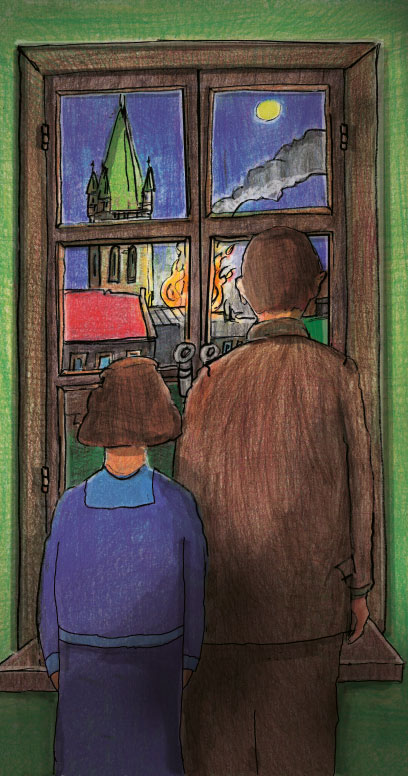
The burning of the synagogue
Helga Becker-Leeser remembers: “So-called ‘normal’ life continued in this way until 9 November 1938. There was suddenly terrible noise downstairs in the evening. My parents rushed into our bedroom to calm us down. Then my father took me into the guest room at the front of the house, went with me to the window, showed me bright flames and great clouds of smoke in the dark air, and said simply and without further elaboration: ‘The synagogue is on fire’”. From: “Von allem etwas”, p. 42.
David Dublon
David Dublon was cantor of the Jewish community in Dülmen and chair of the “Loreley” choir. The Dublon family lived in an upstairs flat right next to the synagogue. In the Reichspogromnacht, while the synagogue was burning, some Dülmen Nazis pushed him down the stairs. Lying injured in the street, he was then set upon by men from the local NSDAP group in Dülmen.
Here is an illustration that still exists of the Leeser textile factory. The letterhead has a drawing of the Leeser business from the time of the First World War.
The Leeser house, Lüdinghauser Straße in Dülmen
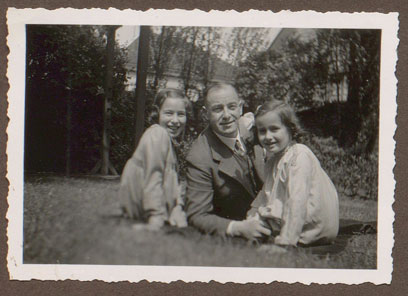
Hermann Leeser, between his daughters Helga and Ingrid, in the garden of the family home on 12 June 1938
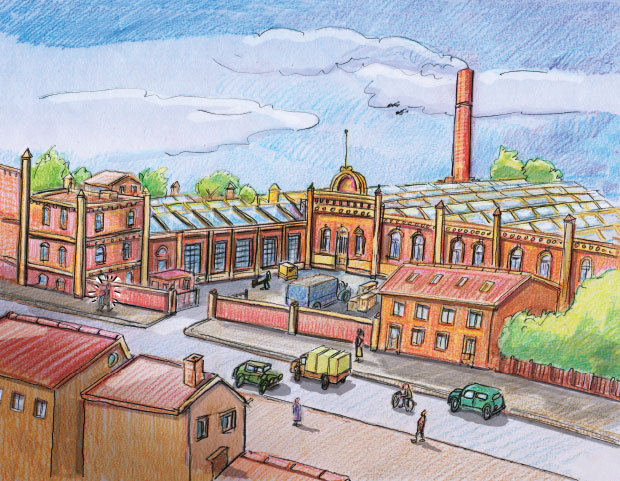
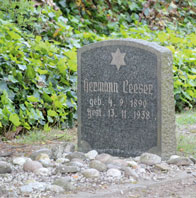
In November 1938, a few days after his death, Hermann Leeser was buried in the Jewish cemetery on Kapellenweg. “Ingrid and I were not allowed to be there”, remembers Helga Becker-Leeser.
No matter whether they were in hiding or not, or hungry or not! Both sisters made a present “Van Alles Wat”
How the book “Von allem etwas …” got its title
Helga recalls: “But suddenly my little sister Ingrid had the idea to celebrate my mother’s 40th birthday in December 1944 at least a little bit – no matter whether we were in hiding or not, or hungry or not! We made a ‘book’ of stories out of a thick and still empty school exercise book. I wrote these stories in pretty handwriting and Ingrid drew beautiful coloured drawings. We even gave the book a title: ‘Van Alles Wat’”.
The original booklet is in the family’s possession, and the title became “Von allem etwas … Meine jüdische Kindheit in Dülmen und Rotterdam, 1928-1945. Erinnerungen von Helga Becker Leeser”. It was published by the school history society at the Hermann Leeser School in Dülmen, together with the Dülmen municipal archives.
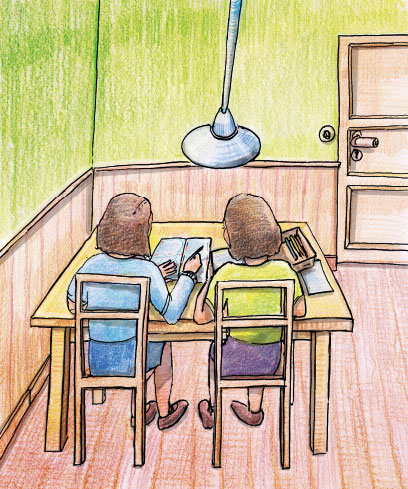
Helga Becker-Leeser loved the chestnut tree that stood in the garden of her parents’ house.
Helga Becker-Leeser loved the chestnut tree that stood in the garden of her parents’ house. It was a relic from a carefree past, a sheltered and structured childhood, “a witness of happy and sad days, of family life, garden parties, moments of peace, of children playing in its shade or making little chestnut men out of its fruit. But also of children who were suddenly forbidden to play outside, of a girl named Helga who swung on its strong branches – and years later, as a grown woman, delighted in its simple existence” (From: “Von allem etwas …”, p. 93).
In fact, while working on the book, the entire project group would often “visit” this tree, amazed that it was still standing, since Dülmen had been almost completely destroyed by the hail of bombs that fell on it in March 1945. The old silent tree that had witnessed so much was indeed originally intended to be in the book’s title: “Our chestnut tree is still standing today …” But, unfortunately, for safety reasons, the tree then unexpectedly had to be felled in May 2015, causing Helga Becker-Leeser and her son Joost Becker, as well as the entire group, great sadness.
This also explains why in the actual, non-virtual exhibition, our door is bordered and covered on both sides by the leaves from this tree, since it was (and still is) a symbolic link between the time before 1933 and the present.
The present
The work of memory in pictures
The literary scholar Gabriele Osthues, head of the literature department in the Catholic Social Academy Franz-Hitze-Haus in Münster, presented the book and the work of the team in the auditorium of the Hermann Leeser School in October 2015. Also there were Helga Becker-Leeser and her sister Ingrid, who was in Dülmen for the first time since 1938.
After the end of the war, Ingrid Leeser had sworn never to set foot on German soil again, and had kept her oath for all of 77 years. She returned to Germany and to her birthplace Dülmen for the first time, though, to mark the launch of the book “Von allem etwas”, which tells her and her sister Helga’s own story. Ingrid has since told us in several letters that are also addressed to our pupils that visiting her hometown has given her peace, and that contact with the pupils makes her happy. Helga Becker-Leeser, on the other hand, was already a witness for us for many decades, and, together with her son Joost Becker, maintained close ties with the “school family”.
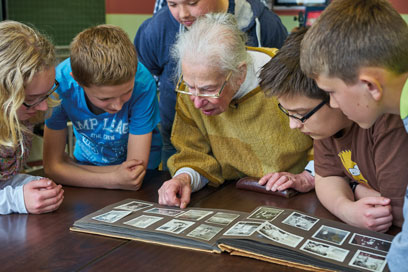
Ingrid Leeser had sworn never to set foot on German soil again,
She had kept her oath for all of 77 years
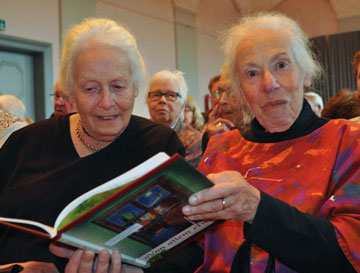
at the book launch
The town of Dülmen was almost completely destroyed by bombing on 21/22 March 1945. There are hardly any photos from the time beforehand, making the Leeser family photo album a real treasure. No one from our team, and nor from Dülmen, knew until now of the existence of this rich and lovingly created album.
On this day, Helga Becker-Leeser was a contemporary witness and answered the pupils’ questions; together with the school community and Gunter Demnig, we laid more Stolpersteine in Dülmen’s town centre.
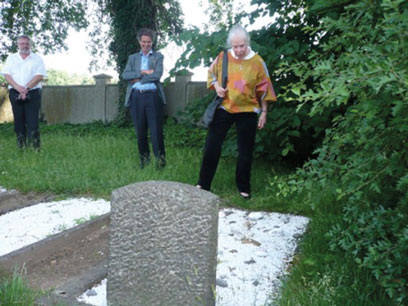
Hermann Leeser
Hermann Leeser was co-owner of the Leeser linen weaving mill; he married Rhea Zondervan, a Dutch woman, in 1927. The couple lived with their daughters Helga and Ingrid on Lüdinghauser Straße, directly opposite St. Victor’s Church.
As a highly decorated officer of the First World War, a respected citizen of the town, and an important employer, Hermann Leeser ignored his brother Otto’s advice to emigrate with his family. Helga powerfully describes the terrible events of 9 November 1938 in the book “Von allem etwas”. On 13 November 1938, in the prison next to the district court in Dülmen, where he and 15 other men of Jewish faith had been imprisoned since the night of the Reichspogromnacht, Hermann Leeser committed suicide. Beforehand, he had whispered to his Dutch brother-in-law, who had been able to see him in prison, that his wife would regain her Dutch citizenship in the event of his death.
Four weeks after her husband’s death, Rhea Leeser was able to organize for the two children to travel to Zeist, where she joined them a few weeks later.
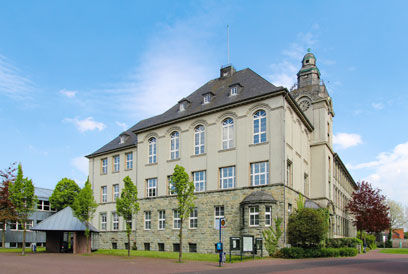
Newspaper article “Secondary school named after Hermann Leeser”, DZ, 5 November 1988
Secondary school named after Hermann Leeser
The Hermann Leeser School is a municipal secondary school for girls and boys. The school is named after Hermann Leeser, a man of Jewish faith from Dülmen whose family owned a textile factory where the school’s sports hall now stands. Hermann Leeser died in 1938 after the Reichspogromnacht; his wife and two daughters, Helga and Ingrid, survived because they were able to flee to Rotterdam, where they went into hiding.
On this day, Helga Becker-Leeser was a contemporary witness and answered the pupils’ questions; together with the school community and Gunter Demnig, we laid more Stolpersteine in Dülmen’s town centre.
The laying of Stolpersteine
The laying of Stolpersteine in Dülmen was initiated, organized and funded by pupils at the Hermann Leeser School. The pupil-led school council has voted for years to use funds from the regular school “Hermann Leeser sponsored run” to lay a total of 44 Stolpersteine in the town centre and surroundings – a unique act in the district of Münster.
The memorial plaque commemorates the synagogue, which was located on the opposite side of the street and was burned down during the Reichspogromnacht. (Picture 4)
Bronze plaque on the external facade of the Cultural and Further Training Centre “Alte Sparkasse”, Münsterstraße 29, Dülmen
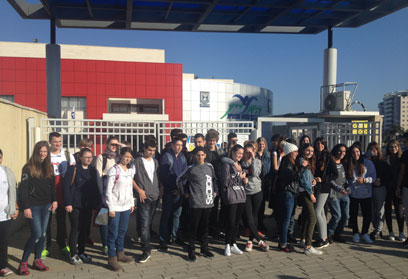
Partner school of the International School for Holocaust Studies in Yad Vashem
The Hermann Leeser school was the first of five schools in North Rhine-Westphalia to become a partner school of the International School for Holocaust Studies in Yad Vashem. As part of these partnerships, Villa ten Hompel in Münster organized an Erasmus programme in 2017 that saw four pupils from each of the five partner schools in North Rhine-Westphalia coming together with a group of pupils from Ha-Maayan High School in Rishon Le Zion, Münster’s twin city. The entire group spent a week in Israel in January, where they worked intensively in seminars and workshops at Yad Vashem, and in May the Israeli and German pupils were guests in Münster at Villa ten Hompel. There were intensive discussions in Israel and in Münster, which also involved the then Minister of Education, Sylvia Löhrmann.
Trip to Israel
A major wish that pupils voiced while working on the book project was to travel to Israel, to visit Yad Vashem, to work and do research there so as to go more deeply into everything that they had talked about so much and to understand it better, and to discover the country and its people. This wish then became reality! Thanks to generous sponsors, the group of pupils, together with Theo Schwedmann, Gerda Küper, Andrea Peine, and Andreas Weinhold, were able to travel to Jerusalem for eight days during the 2016 summer holidays. In Yad Vashem, the world’s largest Holocaust memorial, the group developed the digital app “Yad Vashem”, whose “Intro” says: “You want to learn about the Israeli Holocaust memorial Yad Vashem?
The school history society at the Hermann Leeser School was there and has brought back photos, interviews and many insights”.
And about the Valley of the Communities, it says: “The Valley of the Communities is a special memorial on the grounds of the Yad Vashem Holocaust Memorial. Located at one of the lowest points of the Mount of Remembrance, it is approximately one acre in height and is intended to commemorate the Jewish communities of Europe that were destroyed in whole or in part during the Holocaust. The names of over 5,000 Jewish communities are inscribed on large polished rock walls. Dülmen is also there in memory of the Jewish community”.
The app was presented in Dülmen as part of Holocaust Remembrance Day 2017, and many pupils in North Rhine-Westphalia have since made use of it.
Idea and text: school history society at the Hermann Leeser School, with Gerda Küper, Dr. Andrea Peinse, Mechthild Remme, Petra Baune, and Frieder Martike; Theo Schwedmann, Dr. Stefan Sudmann (Dülmen municipal archivist)
Design and drawings: Christiane Daldrup, Udo Schotten
Photos and sources: 1: Drawing, Udo Schotten. “Von allem etwas”, p. 29; 2: Photo, Helga Becker-Leeser’s private archives. “Von allem etwas”, p. 28; 3: Photo, Heinrich Pohlmann. “Von allem etwas”, p. 48; 4: Elisabeth Buthmann’s private archives. “Von allem etwas”, p. 38; 5: Photo, Leo Baeck Institute, Center for Jewish History, New York – Archive No. F24265. “Von allem etwas”, p. 26; 6: Drawing, Udo Schotten. “Von allem etwas”; 7: Dülmen municipal archives. “Von allem etwas”, p. 39; 8: Dülmen municipal archives. “Von allem etwas”, p. 27; 9: Photo, Helga Becker-Leeser’s private archives. “Von allem etwas”, p. 23; 10: Dülmen municipal archives. “Von allem etwas”, p. 19; 11: Drawing, Udo Schotten. “Von allem etwas”, p. 18; 12: Photo, Christiane Daldrup. “Von allem etwas”, p. 47; 13: Drawing, Udo Schotten. “Von allem etwas”, p. 69; 14: Photos, Joost Becker. “Von allem etwas”, p. 69; 15: Drawing, Udo Schotten. “Von allem etwas”, p. 92; 16: Photo, Dülmener Zeitung; 17: Photo, North Rhine-Westphalia education partners, Andreas Weinhold. “Von allem etwas”, p. 82; 18: Photo, Dülmener Zeitung; 19: Dülmener Zeitung. “Von allem etwas”, p. 80; 20: Photo, Dietmar Rabich. “Von allem etwas”, p. 80; 21: Drawing, Udo Schotten. “Von allem etwas”, p. 81; 22: Dr. Andrea Peine; 23: Photo, Dietmar Rabich. “Von allem etwas”, p. 43; 24: Dr. Andrea Peine
Short info on the book project
The “Von allem etwas” book project at the Hermann Leeser School was awarded a prize at the 2015 Education Partner Congress of the Media Advisory Service of the state of North Rhine-Westphalia, which focused on “Memory – Remembering needs to be learned”.
Holocaust survivor Helga Becker-Leeser’s personal story of her Jewish childhood in Dülmen and Rotterdam was turned into a graphic novel as part of an intensive year of work by a team consisting of pupils from the school history society at the Hermann Leeser School; their teachers Dr. Andrea Peine and Gerda Küper, both Yad Vashem graduates; the head of the municipal archives, Dr. Stefan Sudmann; Theo Schwedmann, the long-time head of the North Rhine-Westphalia research project “Education after Auschwitz”; the chair of the local history society in Dülmen, Eric Potthoff; the graphic designer Christiane Daldrup; and the artist Udo Schotten.
